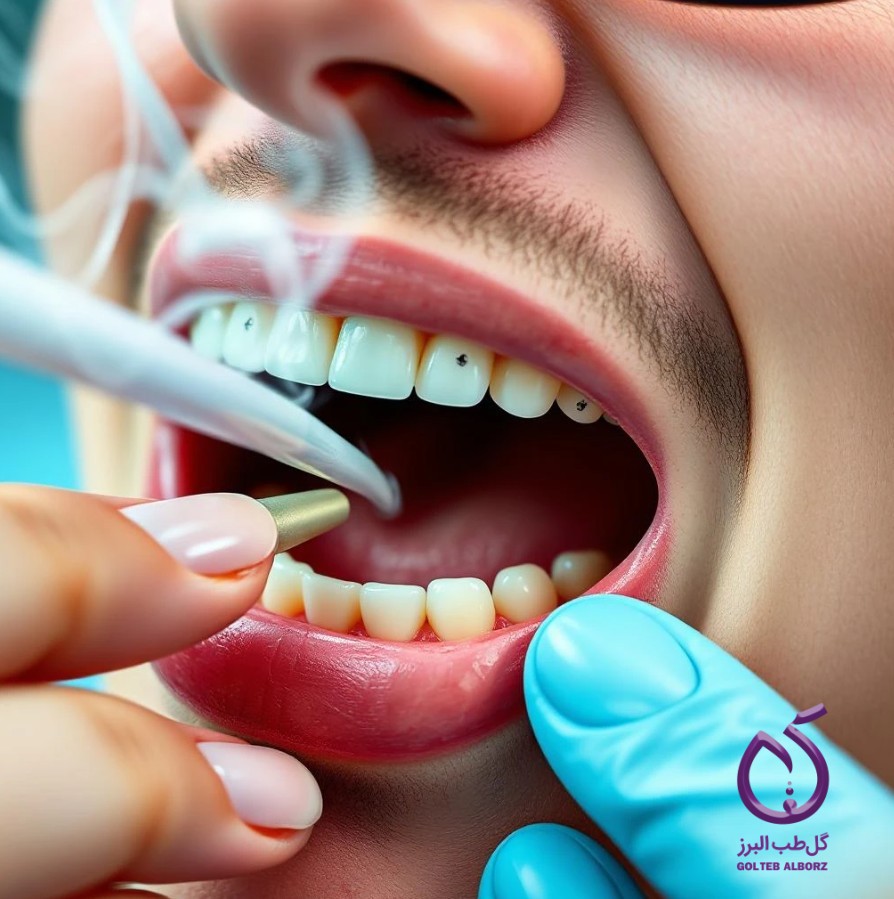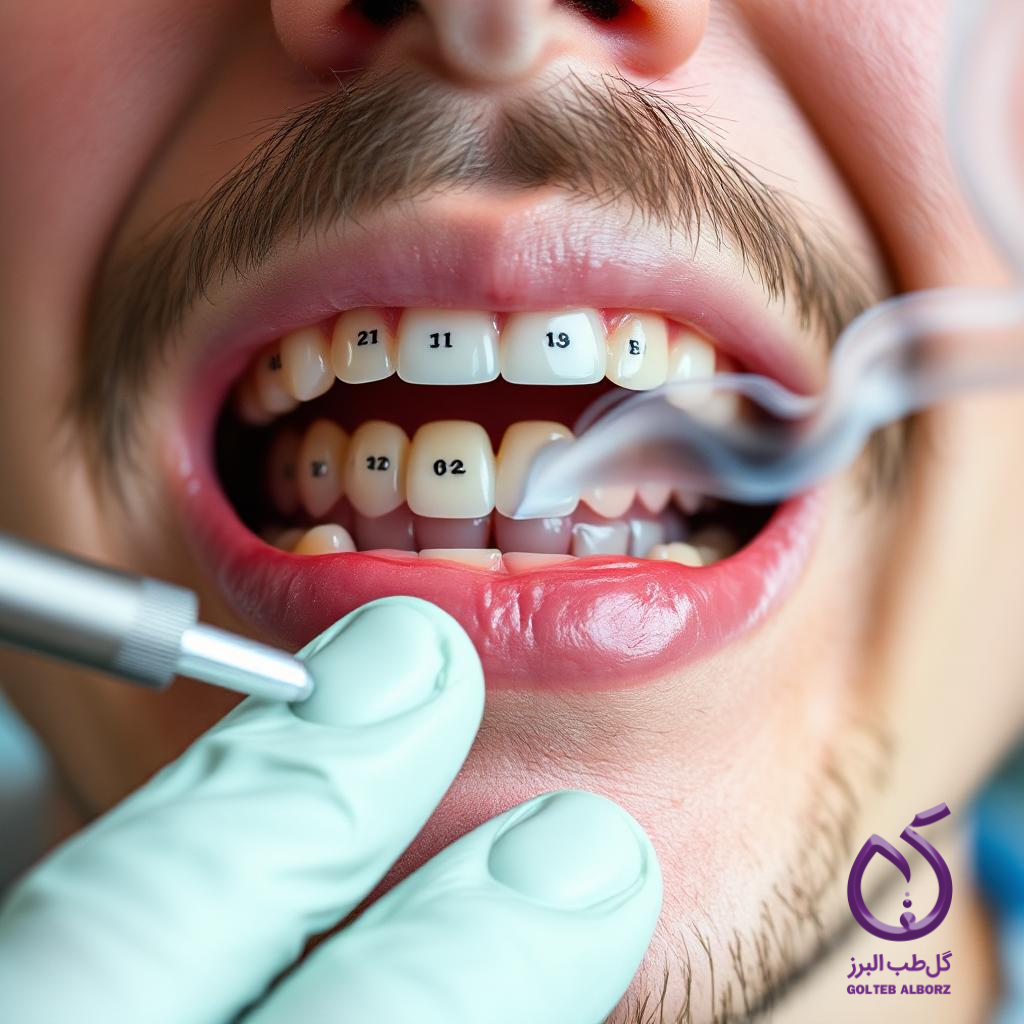Evaluation of the Impact of Smoking on Orthodontic Treatment
2025-05-12 13:30:56

Abstract
Smoking is a prevalent habit known for its detrimental effects on oral health and it affects not only oral health but also various organ systems. The influence of smoking on periodontal health, including gingival inflammation, bone loss and delayed wound healing, poses significant challenges during orthodontic therapy. Orthodontic treatment depends on healthy bone and periodontal remodeling. Smoking reduces blood flow and oxygen to these areas, which can slow tooth movement and complicate treatment. It also increases plaque buildup, leading to potential periodontal diseases and enamel damage. Even after treatment, smoking can affect how well your teeth stay in their new position, increasing the risk of relapse. Quitting smoking can help improve your results and keep your smile healthier in the long run. Therefore, the literature concluded that orthodontists should consider smoking cessation interventions as an integral
part of patient management to optimize treatment success and long-term oral health. This review explores the specific implications of smoking on orthodontic treatment outcomes.
Introduction And Background
Tobacco use is associated with an increased risk of periodontal diseases, loss of teeth, and diminished success in orthodontic treatments, which may result in loss of tooth movement. Most individuals begin smoking at a very young age, and due to many unsuccessful attempts at quitting, prevention is crucial. Nicotine is just one of the 7,000 harmful components found in tobacco. Numerous studies have investigated the effects of nicotine on bone remodeling using various assessment methods
Orthodontic treatment can lead to changes in alveolar bone thickness, potentially causing defects or perforations depending on the movement pattern. This process involves biological reactions that remodel the bone, but the resulting low mineralization can weaken bone structure, increasing the risk of complications like intrusion and tipping. Factors such as age, sex, genetic predisposition, and lifestyle choices, including smoking, can affect bone mineral density (BMD).
Orthodontics aims to enhance the stomatognathic system's function, aesthetics, periodontal health, and treatment stability, with aesthetic improvement being a key motivator for patients. Patients seek aesthetic brackets made from translucent plastic or ceramic for their color stability. While ceramic brackets typically resist staining, plastic ones can discolor due to exogenous factors like food and beverages and endogenous factors like UV radiation. Smoking introduces hazardous materials, such as tar and carbon monoxide, into the oral cavity, potentially staining teeth and resin composites. The global prevalence of smoking, including in Brazil, raises concerns about the potential discoloration of aesthetic brackets due to cigarette smoke and heat
The main aim was to explore the difficulties orthodontic patients encounter when they smoke, describing the biological effects of smoking on their care and providing coping mechanisms. In order to improve treatment outcomes, lower problems, and improve orthodontic patients' long-term periodontal health, it highlights how crucial it is to address smoking habits
Discussion
Influence of Smoking on Periodontal Health Orthodontic treatment may improve, harm, or preserve the periodontal condition. Patients having orthodontic therapy may have an increased risk of periodontal problems. Thus, before beginning orthodontic treatment, a comprehensive periodontal evaluation is necessary
It is thought that smoking's effects come from nicotine's ability to narrow blood vessels and activate platelets, carbon monoxide's ability to cause low oxygen levels, and hydrogen cyanide's ability to stop cells from using oxygen for energy. Jut Berger et al. conducted a study to investigate the relationship between smoking and BMD, employing radiography to examine new fractures and prevalent vertebral fractures in older adults. The research determined that smoking among elderly men correlates with diminished BMD and a heightened incidence of vertebral and hip fractures. Smoking is a major lifestyle characteristic that increases the risk of bone loss and fractures without regard to other variables such as age, weight, sex, or menopause
Smoking reduces bone mass and is associated with the onset of osteoporosis, especially in older individuals. Rhee et al. carried out a cross-sectional study, which revealed that risk factors for middle-aged Korean men's declining BMD include greater age, lower BMI, lower blood IGF-I levels, and a history of current smoking
Nicotine, the primary addictive element in tobacco, exerts numerous detrimental effects on oral tissues. It induces vasoconstriction, reducing blood flow and oxygen delivery to the gums and other oral tissues, hindering the healing process, and elevating the risk of periodontal disease. Furthermore, nicotine influences fibroblasts and keratinocytes in the gums, leading to diminished tissue regeneration and increased vulnerability to infections

Effect of Smoking on Orthodontic Miniscrews Although smoking constitutes a risk factor for implant failure, it is not an unequivocal contraindication. Clinicians must acquire a comprehensive smoking history, including length, intensity, and current status, prior to implant treatment. Dentists ought to advocate for smokers to quit, as smoking exacerbates difficulties and diminishes success rates. Clinicians must evaluate the hazards before proceeding, and informed permission is necessary prior to treatment. These results suggest that heavy smoking negatively impacts the success rates of orthodontic miniscrews
Conclusions
Smoking greatly delays the healing process, aggravates periodontal disease, and raises the possibility of problems during orthodontic treatment, including bone loss and root resorption. Compared to non-smokers, these consequences result in longer treatment durations and higher relapse rates. Because smoking alters oral conditions, smokers are more likely to suffer problems with orthodontic appliances, such as bracket detachment, and decreased treatment effectiveness. Smoking's adverse effects on bone and periodontal health impair the long-term stability of orthodontic treatment outcomes. Smokers have higher relapse rates and require more intensive retention protocols. Nicotine and other tobacco toxins impair blood flow, reduce oxygen supply, and weaken immune defenses, heightening infection risks and slowing healing. This leads to greater susceptibility to periodontal disease, bone loss, and complications in orthodontic procedures, such as higher miniscrew failure rates and discoloration of aesthetic appliances. Waterpipe and passive smoking have similar effects, while smokeless tobacco causes localized issues. Smoking cessation is crucial, especially for adolescents, to improve treatment success and long-term periodontal health.





